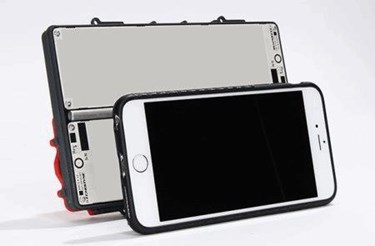Metamaterial-Based Radar Lets Drones Fly Beyond Visual Line Of Sight
By Jof Enriquez,
Follow me on Twitter @jofenriq

Echodyne Corporation, a developer of metamaterials-based radar systems, says it has completed testing on its airborne Metamaterial Electronically Scanning Array (MESA)-Detect and Avoid (DAA) radar on a small Unmanned Aerial Vehicle (sUAV). The landmark tests bring the company one step closer to launching the radar commercially.
Federal Aviation Administration (FAA) rules require that all drones remain within their pilots’ line of sight to avoid collisions with both cooperative objects (those transmitting their position with a transponder) and non-cooperative objects (aircraft without transponders, birds, etc.). DAA radar technology — as a safe replacement for the pilot's "see and avoid" capability — are touted as tools that will someday allow unmanned aircraft to perform beyond visual line of sight (BVLOS) operations safely, regardless of weather conditions.
Currently, long-range, high-resolution phased-array radars used in military aircraft are “the pinnacle of radar technology,” Echodyne co-founder and CEO Eben Frankenberg told IEEE Spectrum. “They steer a narrow beam on both transmit and receive, and they can point from any one direction to any other direction very quickly. We’ve come up with a way to make essentially that, but with much simpler architecture.”
Echodyne says its smartphone-sized MESA radar is based on metamaterials — manufactured materials that possess exotic properties not usually found in nature — that offer significant cost, size, weight, and power (C-SWAP) advantages over conventional electronically scanning array technology. Instead of conventional phase shifters, Echodyne's radar array is made of multiple layers of carefully patterned copper wiring, and beam control results from heating specific areas of the wiring, according to IEEE Spectrum. The smaller design is less powerful and has shorter range, but it also is more affordable to build, and is no less than effective for most commercial applications.
During multiple flying test missions, the radar "successfully scanned a broad field of view in both azimuth and elevation (up to 120° x 80°) detecting and tracking multiple types of aircraft including a small UAV, a Beechcraft Bonanza, and an ultralight aircraft flying through its airspace," the company stated in a news release. "The radar provided a 4D data cube of radar returns accurately depicting ground vegetation, barbed wire fences and other stationary obstacles, as well as the flight paths of the tracked aircraft."
“It’s great to see our technology performing in real-world field tests exactly as designed,” said Frankenberg. “We’ve made tremendous progress with our technology in a very short time and are excited to release our MESA-DAA radar into the market in just a few months. Tests like this show that advanced radar can be deployed directly on small commercial UAVs to ensure safe beyond line of sight drone operations. Unlike other sensor technologies such as cameras and LIDARs, radar provides accurate tracking of obstacles at long range across a broad field of view in all types of weather.”
Echodyne's MESA-DAA radar will be available to commercial customers in early 2017, roughly one year after the company brought the first metamaterials-based radar antenna to market.
